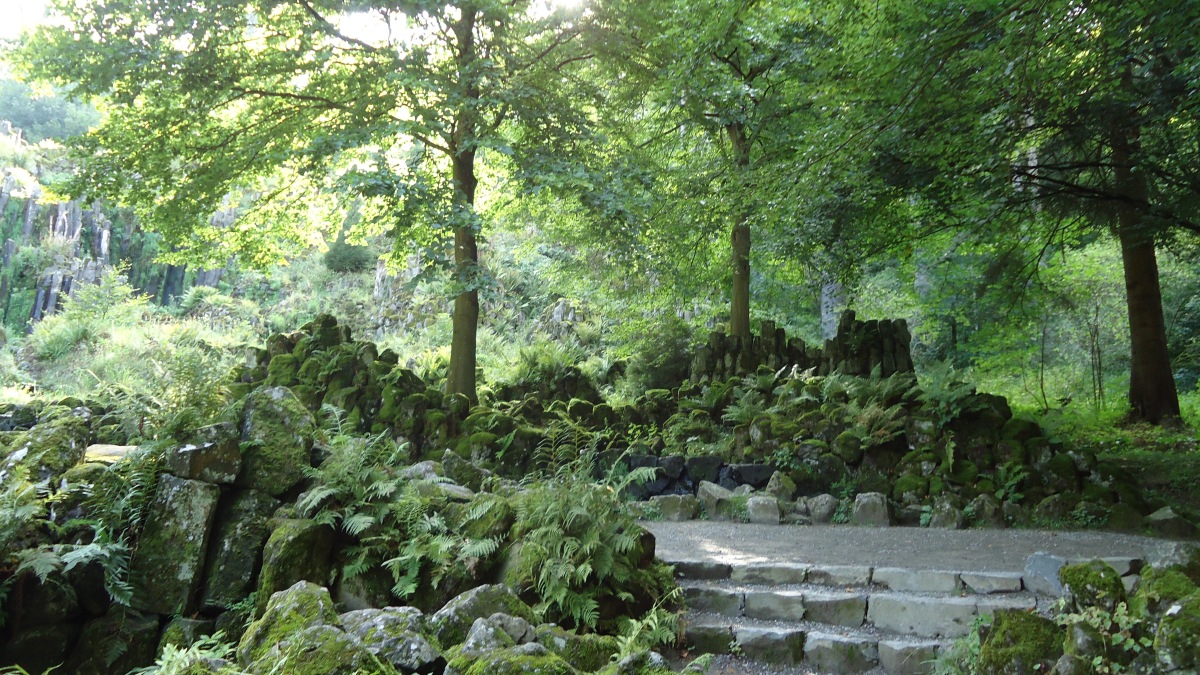The city of Dresden has lots of interesting things to offer to tourists, but why not explore its surrounding regions? We made a trip to the village of Rathen, just 35 kilometres southeast of Dresden. It’s really easy to reach by train in about 5 minutes (S-Bahn, direction Schöna). In the summer, you can also take a boat from Dresden to Rathen. Rathen is known for two things: it’s climatic spa and the famous Bastei-rocks. We came to see the latter!

Saxon Switzerland
The Bastei-rocks (Bastei means ‘bastion’) are famous for their bizarre shapes, caused by water erosion more than one million years ago. The rock formation towers 194 metres above the Elbe. No wonder so many painters have portrayed this special landscape in the past few centuries! The Bastei-rocks are part of a large climbing and hiking area. Confusingly, the rocks are located in a national park called Saxon Switzerland. About 250 years ago, two Swiss artists decided that this area just looked very much like their homeland.


Bastei Bridge
For more than 200 years, tourists have been visiting the Bastei in large numbers. So be prapared for large crowds when you climb up the steep footpaths and steps, that take you through beautiful woods all the way to the top! Fotunately, you have the opportunity to take a break at the several magnificent viewing points along the route. One of them is the famous Bastei Bridge, a 76,5 metres long, man made bridge that connects the mountains. The first bridge was built in 1824 and was made of wood. The current one is made of sandstone and was built in 1851.


Neurathen Castle
From the Bastei Bridge, you can enter the ruins of Neurathen Castle. The entrance fee is 2 euros and it is certainly worth it, if only for the spectacular views. Felsenburg Neurathen was built in the 11th century and burnt down by a besieging army in 1484. So there is not much left of the original castle except for some rooms and a cistern. Nowadays, Felsenburg Neurathen is an open-air museum displaying ruins of the fortress, a slingshot replica, and excavated materials like potteries and other artifacts.


Reaching the top of the Bastei took us about an hour. When you get there, you will find lots of restaurants and outdoor cafes where you can toast with your friends to reaching the top of this fantastic mountain!
Köningstein Fortress
In the afternoon, we took the train to the village of Köningstein, which is only one station from Rathen. There we wanted to see the Köningstein Fortress. We decided not to go hiking all the way tot he castle on the top, as we were still exhausted from climbing the Bastei. Instead, we boarded the Festung Express, a vintage-looking double-decker bus, that takes visitors to the fortress.

Königstein Fortress is one of the largest hilltop fortifications in Europe and is located on the rock plateau of a table mountain. The 24 acres plateau rises 240 metres above the river, offering stunning views on the Elbe river and its surroundings. The fortress was built in the 13th century. Around the castle, you will find about 50 buildings, a mix of late Gothic, Renaissance, Baroque and 19th century architecture. Königstein Fortress a Medieval castle, then became a monastery. In1589, the building was turned into a fortress. Due to its strategic position, no enemy ever attacked the fortress. The building was mostly used as a prison. Until 1922, it was the most feared prison in Saxony.

Since 1955, Königstein Fortress has been open tot he public. About 700,000 tourists visit the well preserved citadel every year. So be prepared for large crowds in and around the castle, especially in the summer. Entrance fee to the fortress is 10 euros, but expect prices for refreshments and toilet use to be quite steep, as usually is the case at tourist hotspots.



















